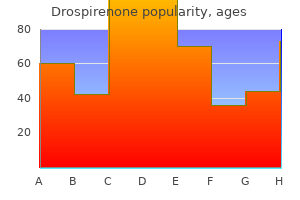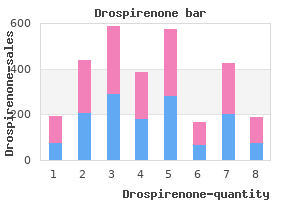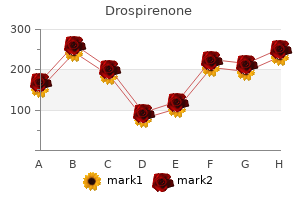Drospirenone
"3.03 mg drospirenone mastercard, birth control for women knitted".
By: R. Kerth, MD
Medical Instructor, Vanderbilt University School of Medicine
Characteristics of Lifestyle Intervention Delivery That May Affect Weight Loss: Intervention 3 birth control pills hair growth buy generic drospirenone 3.03mg. Characteristics of Lifestyle Intervention Delivery That May Affect Weight Loss or Weight 3 birth control yes or no purchase 3.03mg drospirenone with mastercard. For this reason birth control pills otc order online drospirenone, it is crucial to identify the behavioral strategies that individuals living in the United States can follow to improve their healthy lifestyle behaviors as well as the key contextual factors that facilitate the ability of individuals to consume healthy diets birth control for 8 days purchase discount drospirenone. In the past, American families seldom consumed food prepared outside their homes and, for the most part, consumed their meals as a family unit. Today, 33 percent of calories are consumed outside the home and it is becoming more common for individuals to eat alone and to bring meals prepared outside into their homes (see Part D. Eating away from home is associated with increased caloric intake and poorer dietary quality compared to eating at home. Specifically, self-monitoring of diet, physical activity, and body weight has been identified as a potential key component of successful healthy lifestyle interventions. Recognizing the importance of these dietary and lifestyle behaviors to the health and well-being of the U. However, after conducting preliminary literature searches, the Committee determined sleep patterns was an emerging area with an insufficient body of evidence and did not include specific questions on this topic. Specifically, the Committee reviewed recent evidence on the impact of diet and weight self-monitoring, and on use of food and menu labels on dietary intake and weight outcomes. However, key m-health studies focused on self-monitoring were identified, and thus were reviewed as part of the body of evidence on self-monitoring. This chapter addresses sedentary behaviors, but not physical activity behaviors 234 2015 Dietary Guidelines Advisory Committee Report in general because these are addressed in Part D. Chapter 1: Introduction, this chapter also addresses major contextual factors that influence the ability of individuals to implement healthy dietary and other lifestyles, including the prevention of sedentary behaviors. The Committee focused on the association between diet, body weight, and chronic disease outcomes and two contextual factors that are highly relevant in the United StatesІhousehold food insecurity and acculturation. It includes at a minimum (a) the ready availability of nutritionally adequate and safe foods, and (b) an assured ability to acquire acceptable foods in socially acceptable ways. What is the relationship between eating out and/or take away meals and body weight in children and adults? What is the relationship between frequency and regularity of family shared meals and measures of dietary intake in U. What is the relationship between frequency and regularity of family shared meals and measures of body weight and obesity in U. What is the relationship between sedentary behavior and measures of dietary intake and body weight in adults? How effective are behavioral interventions in youth that focus on reducing recreational sedentary screen time and improving physical activity and/or diet? What is the relationship between use of diet and body weight self-monitoring strategies and body weight outcomes in adults and youth? What is the relationship between knowledge and use of food and menu labels and measures of dietary intake in U. Specifically, the іfast foodґ category was broadened to capture other types of eating out venues. Question 1: What is the relationship between eating out and/or take away meals and body weight in children and adults? Chapter 1: Food and Nutrient Intakes, and Health: Current Status and Trends), individuals should limit the frequency of eating at fast-food establishments. Review of the Evidence Fifteen prospective studies examined the relationship between eating out and/or take away meals and measures of body weight in adults and children. Men and women and boys and girls were well represented and the majority of studies within the United States included diverse populations. In children, seven prospective cohort studies19, 21, 22, 24, 27-29 examined the relationship between frequency of fast-food meals, or consumption of other types of meals and anthropometric outcomes and, overall, found mixed results. Two studies looked at a variety of non-fast-food meals away from home, using varying definitions of food establishments and meal types and reported mixed findings for a relationship with weightrelated outcomes. Evidence related to the association between frequency of meals from other types of restaurants and intake of all takeout meals and weight is limited, but indicates traditional restaurant meal frequency may not be associated with weight outcomes. Two studies from the same cohort found no significant relationship between frequency of meals from restaurants (non-fast-food establishments), and weight-related outcomes. For example, they provide an opportunity for parents to model good eating behaviors and create a positive atmosphere by providing time for social interaction and thus a sense of social support for all members.

For all these reasons birth control breastfeeding order drospirenone 3.03mg amex, a positive association between changes in income and the birth rate over the cycle is readily explained birth control for women hairstyle generic drospirenone 3.03 mg. Wheipton birth control yeast infections discount drospirenone 3.03mg without prescription, Forecasts of the Population of the United States 1945-1975 apri birth control 015 mg 3.03 mg drospirenone visa, Bureau of the Census, 1947, p. The secular rise in income causes an increase in the quality of children, and therefore expenditures per child rise. This tends to diminish the quantity of children dernдсded, and the well-known empirical inverse relation between income and the birth rate reasserts itself. They are not intended to define a standard of care, and should not be construed as doing so. Neither should they be interpreted as prescribing an exclusive course of management. Every healthcare professional making use of these guidelines is responsible for evaluating the appropriateness of applying them in the setting of any particular clinical situation. The recommendations for research contained within this document are general and not meant to imply a specific protocol. In citing this document, please refer to the original source as follows: National Kidney Foundation. No part of this publication may be reproduced or transmitted in any form or by any means, electronic or mechanical, including photocopy, recording, or any information storage retrieval system, without permission in writing from the National Kidney Foundation, Inc. Evaluation of Laboratory Measurements for Clinical Assessment of Kidney Disease Guideline 4. Stratification of Risk for Progression of Kidney Disease and Development of Cardiovascular Disease Guideline 13. Kidney Function and Associated Conditions in the United States: Methods and Findings From the Third National Health and Nutrition Examination Survey (1988 to 1994). Chronic Kidney Disease-Related Factors Potentially Related to an Increased Risk for Cardiovascular Disease. Parallel advances in understanding the course of progressive kidney disease and its complications have resulted in the development of interventions that can slow the progression and ameliorate the complications of chronic kidney disease. Yet, the application of these advances remains inconsistent, resulting in variations in clinical practice and, sadly, in avoidable differences in patient outcomes. The frequency with which they continue to be cited in the literature and serve as the focus of national and international symposia is but a partial measure of their impact. This enlarged scope increases the potential impact of improving outcomes of care from the hundreds of thousands on dialysis to the millions of individuals with kidney disease who may never require dialysis. The first of these principles was that the development of guidelines would be scientifically rigorous and based on a critical appraisal of the available evidence. The second principle was that the participants involved in developing the guidelines would be multidisciplinary. This was especially crucial because the broader nature of the new guidelines will require their adoption across several specialties and disciplines. The third principle was that the Work Groups charged with developing the guidelines would be the final authority on their content, subject to the requirements that they be evidence-based whenever possible, and that the rationale and evidentiary basis of each guideline would be explicit. By vesting decision-making authority in highly regarded experts from multiple disciplines, the likelihood of developing clinically applicable and sound guidelines is increased. Finally, the guideline development process would be open to general review, in order to allow the chain of reasoning underlying each guideline to undergo peer review and debate prior to publishing. It was believed that such a broad-based review process would promote a wide consensus and support of the guidelines among health care professionals, providers, managers, organizations, and recipients. This initial set of guidelines will provide a standardized terminology for the evaluation and classification of kidney disease; the proper monitoring of kidney function from initial injury to end stage; a logical approach to stratification of kidney disease by risk factors and comorbid conditions; and consequently a basis for continuous care and therapy throughout the course of chronic kidney disease. While considerable effort has gone into the development of the guidelines during the past 24 months, and great attention has been paid to detail and scientific rigor, it is only their incorporation into clinical practice that will assure their applicability and practical utility. In a voluntary and multidisciplinary undertaking of such magnitude, numerous others have made valuable contributions to these guidelines but cannot be individually acknowledged here. In the United States, there is a rising incidence and prevalence of kidney failure, with poor outcomes and high cost. Increasing evidence, accrued in the past decades, indicates that the adverse outcomes of chronic kidney disease, such as kidney failure, cardiovascular disease, and premature death, can be prevented or delayed. Earlier stages of chronic kidney disease can be detected through laboratory testing. Treatment of earlier stages of chronic kidney disease is effective in slowing the progression toward kidney failure.

Rationale: Literature supports that eating and physical activity behaviors and body weight status of children predict changes over time as they progress into adolescence and adulthood birth control period buy drospirenone amex. The vast majority of published research focuses on children in grades K-8 birth control pills 999 effective generic drospirenone 3.03mg free shipping, or ages 4-12 years birth control pills holder discount drospirenone 3.03mg with visa, and new and improved data are needed on adolescents and the transition from childhood to adolescence birth control for women 0f generic drospirenone 3.03 mg without a prescription. Conduct assessments of the effectiveness of worksite interventions that emphasize obesity prevention and weight control among workers across racially/ethnically diverse populations, blue and white collar employees, and at-risk populations. Rationale: In light of the high rates of obesity and overweight, worksite interventions targeting obesity prevention and weight control through enhanced dietary behaviors and increased physical activity among workers is important. Rationale: Developing sustainable production and supply chain practices for all parts of MyPlate, especially meat and dairy products will be important to reduce their environmental impact. Conduct research on methods to ensure the maintenance of nutrient profiles of high-trophic level farmed seafood and improve nutrient profiles of low-trophic farmed seafood concurrently with research to improve production efficacy. Efficient production of seafood with nutrient profiles that are known to be healthful should be emphasized. Conduct research to develop methods to ensure contaminant levels in all seafood remain at levels similar to or lower than at present. Conduct research to determine whether sustainable diets are affordable and accessible to all sectors of the population and how this can be improved, including how policy strategies could influence the supply chain (all steps from farm to plate) to affect this improvement. Rationale: Ensuring that sustainable diets are accessible and affordable to all sectors of the population is important to promote food security. Rationale: Understanding consumer choice across demographic groups and the degree to which either health and/or sustainability is a significant decisional criterion as well as the degree to which 2015 Dietary Guidelines Advisory Committee Report 381 include developing effective rapid response approaches if the quality of seafood supply is acutely affected. Evaluate the effects of coffee on health outcomes in vulnerable populations, such as women who are pregnant (premature birth, low birth weight, spontaneous abortion). Rationale: Given the limited evidence of the effects of coffee/caffeine consumption on pregnancy outcomes, future studies need to establish safe levels of coffee/caffeine consumption during pregnancy. Examine the effects of coffee on sleep patterns, quality of life, and dependency and addiction. Given the increasing prevalence of energy drink consumption among children, adolescents, and young adults, research is needed to identify safe levels of consumption in these groups. Determine the prevalence of excessive caffeine intake in children and adults beyond intake of energy drinks. Identifying the sources and safe levels of consumption will help in formulating policy and framing recommendations. Examine the effect of excessive consumption of caffeine and energy drinks on health outcomes in both children and adults. Rationale: Prospective studies of associations of excessive caffeine and energy drink intake with health outcomes in children and adults are necessary, as randomized controlled trials are not feasible given ethical constraints. Conduct observational studies to examine the health effects of alcohol mixed with energy drinks. Rationale: In recent years, consumption of alcohol energy drinks by adolescents has resulted in emergency room admissions and deaths. No data exist on the prospective association between consumption of alcohol energy drinks and health outcomes in both adolescents and adults. Examine the risks of aspartame related to some cancers, especially hematopoietic ones, and pregnancy outcomes. Rationale: Limited and inconsistent evidence suggests a possible association between aspartame and risk of hematopoietic cancers (non-Hodgkin lymphoma and multiple myeloma) in men, indicating the need for long-term human studies. Design and conduct studies with sufficient power to define the impact of improving dietary quality, including the lowering dietary sodium intake, on hypertension and relevant disease outcomes, including cardiovascular disease, stroke, peripheral vascular disease, kidney disease, and others. Rationale: the current literature is incomplete, limited in power and durations, and often compromised by methodological challenges that must be addressed in well-designed studies with relevant clinical outcomes. Assess the accuracy of 24-hour urine collections for sodium assessment in populations with different health conditions. However, individual support for public health policies will be needed to further document demand for changes in the sodium food environment.


Even better birth control for 5 years insert discount drospirenone 3.03 mg on line, suppose hospitals were paid to keep certain high-risk patients out of the hospital in the first place birth control pills infertility discount drospirenone 3.03mg. While progress in reducing the burden of chronic diseases will undoubtedly include scientific innovation birth control pills types purchase drospirenone with american express, the key to reaping the fruits of that labor will be our ability as a system to move to a model that rewards positive health outcomes birth control pills 3 weeks on 1 week off discount drospirenone american express, not health care resource use. Goldman is the author of over 200 articles and book chapters, and is a health policy advisor or former advisor to the Congressional Budget Office, the Fred Hutchinson Cancer Institute, Covered California, and several health care companies. Schaeffer Center for Health Policy & Economics at the University of Southern California. Sarah Brandon is a Master of Public Policy candidate at the Goldman School of Public Policy of the University of California, Berkeley. The long-term benefits of increased aspirin use by at-risk Americans aged 50 and older. Beyond the Funhouse Mirrors: Research Agenda on Culture and Psychiatric Diagnosis. The 2011 Annual Report of the Board of Trustees of the Federal Old-Age and Survivors Insurance and Federal Disability Insurance Trust Funds. Access to mental health care increased but not for substance use, while disparities remain. Journal of Gerontology, Series B: Psychological Sciences and Social Science, 66(1), 75-86. The struggle to provide communitybased care to low-income people with serious mental illnesses. Investing in Prevention to Address the Burden of Chronic Disease and Mental Health 71 Cuzick, J. Estimates of benefits and harms of prophylactic use of aspirin in the general population. Typical and atypical antipsychotics differentially affect long-term incidence rates of the metabolic syndrome in first-episode patients with schizophrenia: A retrospective chart review. Prevalence of the metabolic syndrome in patients with schizophrenia treated with antipsychotic medication. The influence of genes on the aging process of mice: A statistical assessment of the genetics of aging. The association of medical comorbidity in schizophrenia with poor physical and mental health. Racial and ethnic disparities in preventable hospitalizations for chronic disease: Prevalence and risk factors. Strengthening Medicare for 2030: Health and Health Care of Medicare Beneficiaries in 2030. Intellectual Property, Information Technology, Biomedical Research, and Marketing of Patented Products. Substantial health and economic returns from delayed aging may warrant a new focus for medical research. Prevalence, severity, and co-occurrence of chronic physical health problems of persons with serious mental illness. Investing in Prevention to Address the Burden of Chronic Disease and Mental Health 73 Kane, J. On the inseparability of mental and physical health in aged persons: Lessons from depression and medical comorbidity. Projections of national expenditures for mental health services and substance abuse treatment. Genetic determinants of human health span and life span: Progress and new opportunities. Implementing the Institute of Medicine definition of disparities: An application to mental health care. New evidence regarding racial and ethnic disparities in mental health: Policy implications. Trends in office-based mental health care provided by psychiatrists and primary care physicians. Aging in America in the twenty-first century: Demographic forecasts from the MacArthur Foundation Research Network on an Aging Society.
Cheap drospirenone amex. Women's Health : Health Risks of Birth Control Pills.

